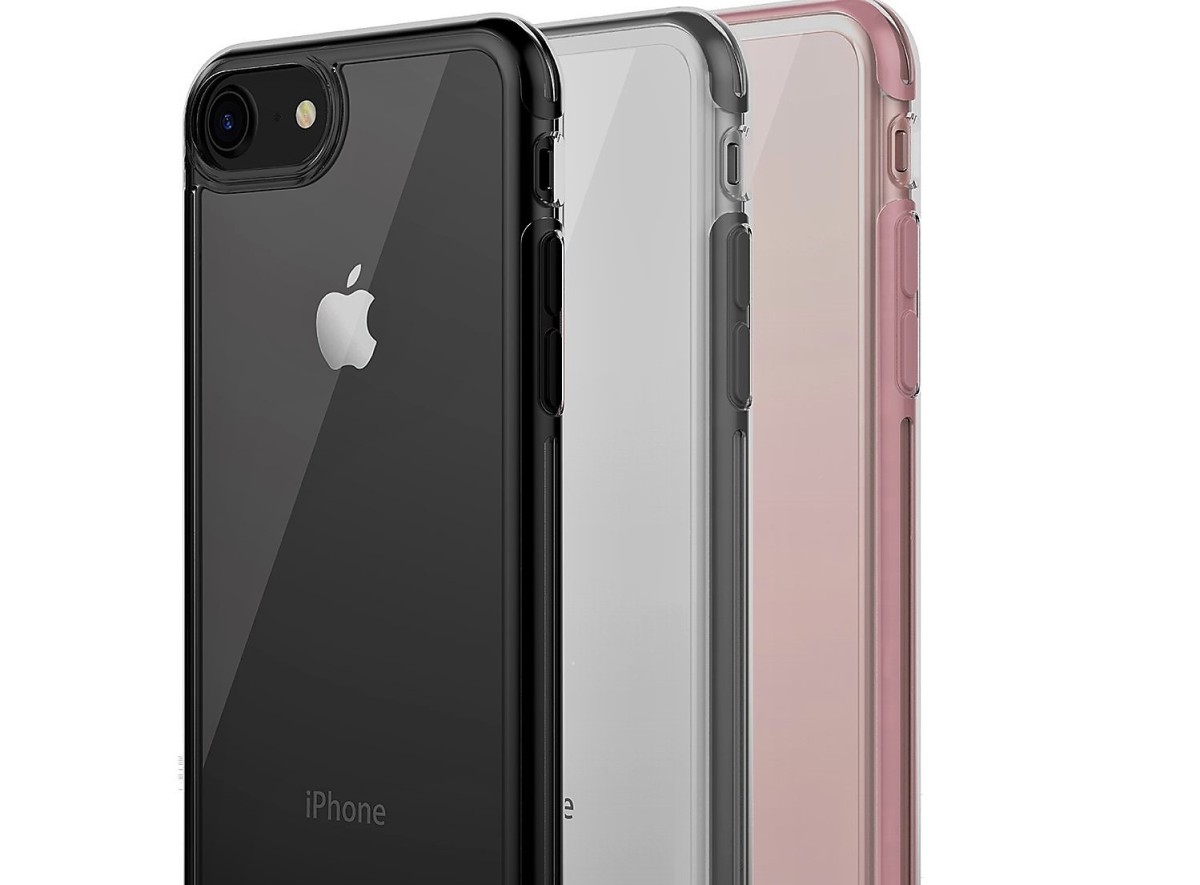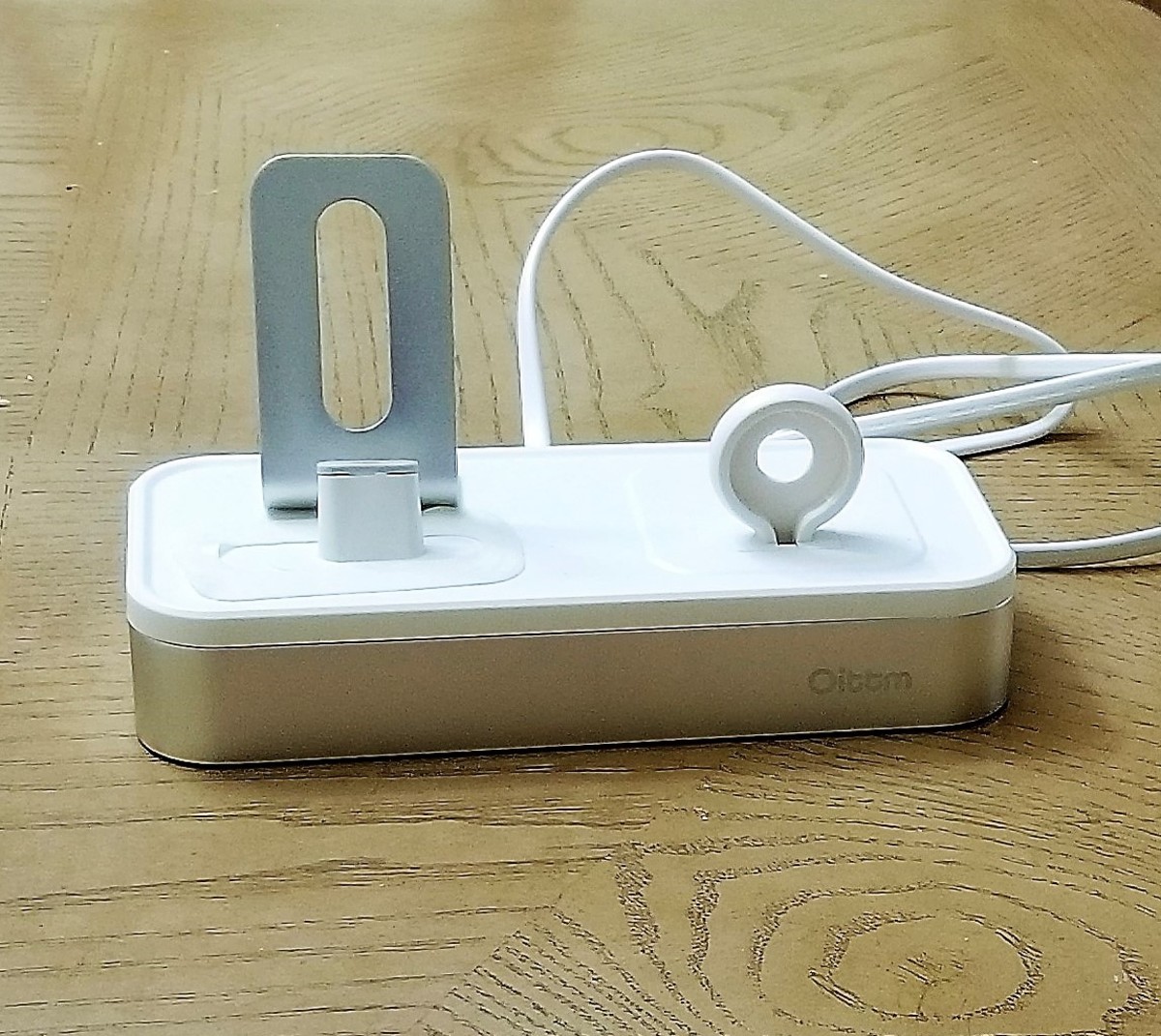- HubPages»
- Technology»
- Communications»
- Smartphones»
- iPhone
Mophie Juice Pack Helium versus LifeCHARGE iPhone 5/5S Battery Case: A Comparative Review
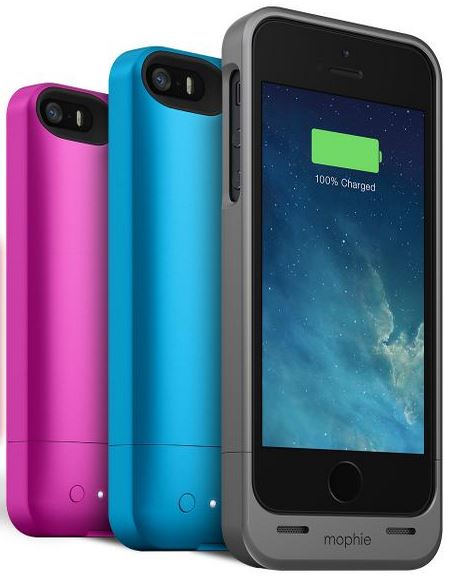
The Mophie Juice Pack Helium
The Mophie Juice Pack Helium was selected for this review due to its similar characteristics shared with the LifeCHARGE iPhone battery case. They both share the same size and thickness, which allows for an accurate comparison between the two. The ultra-thin Mophie design packs a 1,500 mAh battery providing an additional 80% charge to equipped iPhones. Despite its lower battery capacity, the Mophie Juice Pack Helium remains extremely lightweight giving its own advantages.
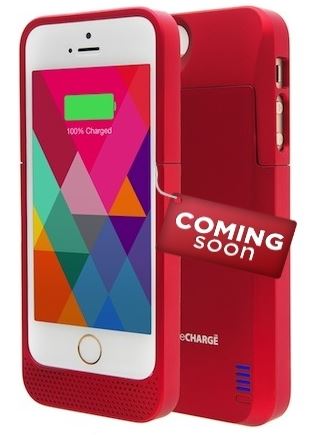
LifeCHARGE iPhone 5/5S Battery Case
As I have already reviewed the LifeCHARGE battery case for iPhone 5 and 5S devices, I would like to see how it stacks up against a leading brand of battery cases. Mophie, being the biggest market player that it is, has been chosen in this side by side comparative review. LifeCHARGE iPhone 5/5S battery cases come with its own color combinations. Although less than Mophie's selection, color options range from black, white, gold, and red coming soon. Nevertheless, the LifeCHARGE delivers a higher battery capacity at 2,300 mAh for a slightly more than full device recharge.
Specification Comparison
Specification
| Mophie
| LifeCHARGE
|
|---|---|---|
Capacity
| 1,500 mAh
| 2,300 mAh
|
Input
| 5V = 0.5A - 1.5A
| 5V = 0.5A
|
Output
| 5V = 1.0 A
| 5V = 1.0 A
|
Battery Type
| *
| Lithium-Polymer
|
*Mophie's webpage did not provide battery type details. Through the look-up in online retailers (Staples), the battery type listed was Lithium-ion Polymer. Since this was not an official listing by Mophie, it is best not to finalize this detail.
A Side By Side Look
It may seem like an overreaction to go into such fine detail with the two cases. After all, the market retail value for both cases sit less than $100. Both cases have a battery in it and their purpose is to provide an additional charge. However, the design difference in the two cases can severely impact your experience with your phone anywhere from grip to usage. Although the basic concept is there, their operational functions vary ever so slightly which makes a big impact and difference in experience.
The Side By Side Look
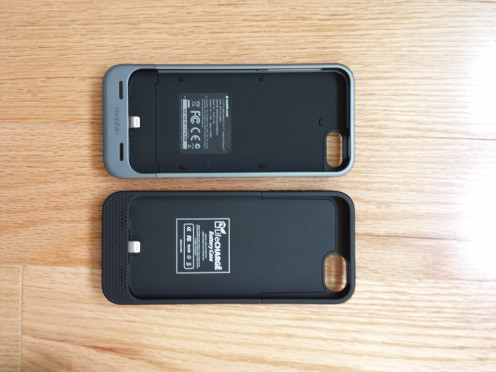
A side by side look reveals many similarities. The camera hole fixture is about the same size and location as necessary. Both are equipped with the newer, not to mention smaller, lightning port. Why? Because that's how the iPhone was made and that's why these cases need to accompany the changes. Even the sound has been redirected with both cases to compensate for the additional bulge over on the bottom end of the case. It is harder to see on the LifeCHARGE, but the sound redirection does not span across the entire bottom length. If you look closely, you can observe two openings similar to the Mophie. Once your iPhone is in the case, the speakers are aligned and the sound will be redirected.
The Interior
Starting off with the interior, both cases share similar features. Both inside and out are rubberized to deliver maximum care for your iPhone. Let's focus on the inside as the title suggests. Both cases are rubberized on the inside to avoid scratching your iPhone as you slide it into place. The new iPhone 5 models are particularly prone to scratches with its new color coating. Mophie adds an additional back rest not seen on the LifeCHARGE.
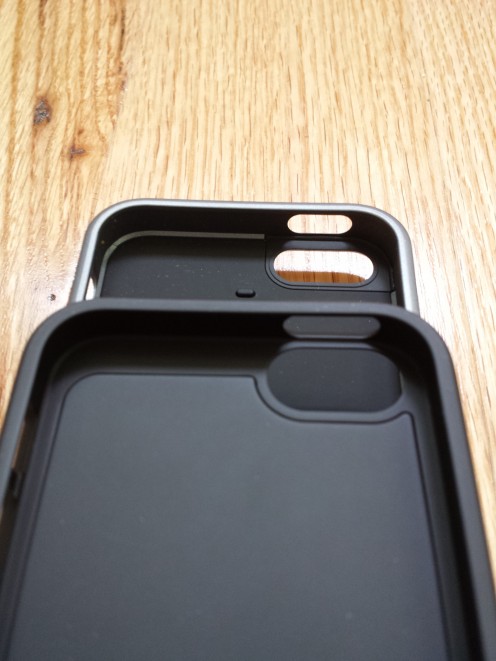
The case on the bottom or back is the Mophie. Notice that LifeCHARGE is case smooth while the Mophie has a "nob" on it. There are four more just like it, two on either side. By design, this is to prevent the case from touching the back of the iPhone. Yet, this is a useless attempt as the rubberized nobs are pushed back as the iPhone slides into place. Also by design, the nobs ensure a tight fit for the iPhone. However, this is very much unnecessary as the bumper takes care of this.
Speaking of the bumper, or in this case the sides of the case, Mophie chose not to rubberize the inner sides exposing your iPhone to the plastic. Meanwhile, the entire interior is rubberized over with the LifeCHARGE case. The rubberized sides prevent the iPhone from slipping out unexpectedly when the case is not intact. While these battery cases offer basic phone protection, it is also important to consider protecting the phones from the cases.
The Exterior
Flipping over the two cases, we see slight variations in the design. There are three areas of interest. The first is the power toggle. LifeCHARGE comes with a single button toggle while Mophie incorporated a flick switch as well as a toggle button. The second is the shape of the case. There is a slight difference is the overall shape. How important is this? If you care about the looks and feel of the case, then it may be more important that you realize. Otherwise, you may disregard this section entirely. Finally, the snap-off design varies slightly with the two cases. It has to do with how the battery is connected. Mophie's design is a bit more interesting. I'm still pondering why Mophie designed it the way that it did.
The Back
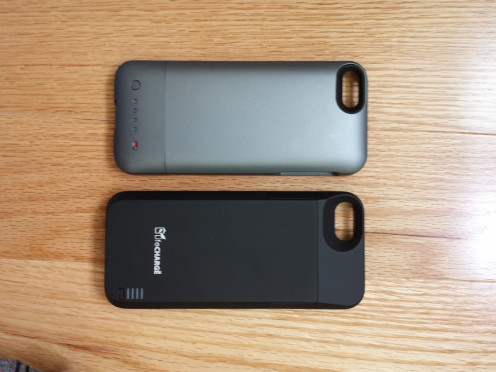
Mophie focuses on a curved back while, also explained in details in my review, LifeCHARGE promotes a box-ish indented inwards flat back. Keep in mind that the Mophie Juice Pack Helium is not so curved that it wobbles back and forth on a flat surface. The majority of the back is still flat allowing a stable placement on a flat surface. The curve or indent lies within the boundary where the sides meet the back. This transition is either curved or indented inwards on another slant.
After holding both in my hands, I prefer LifeCHARGE's box-ish feel better. My fingertips ended up resting on the indented-inwards slant as compared to the reaching all the way to the other side of the case over on the Mophie. The additional reach limits movement and navigation especially when using only one hand. It terms of the grip, LifeCHARGE does it better in this aspect.
Battery Operations
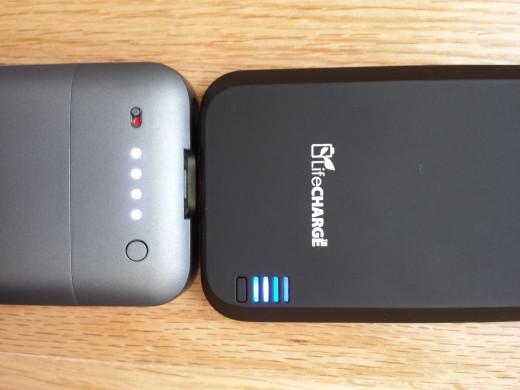
Both share four LED indicator lights to signal 25% increment battery levels. However, you may notice that there's a bit more to Mophie's case. I'm not quite sure who's the real winner here as each comes with its own set of drawbacks. Let's start off with LifeCHARGE. The power toggle is awfully small. Someone like me, with pudgy fingers, it is almost impossible to press down on the power button to turn on the case. I would have to use my fingernails and dig right into the button to turn it on. Because of its small size, I find this slightly inconvenient especially when for those in a hurry. One has to turn the case over and use a bit of effort to get the case powered on. Definitely very hard to toggle the power button with one hand. With that said, I don't find Mophie much better.
It took me a while to figure out, but it turns out that the button you see left to do four LED lights indicator is not the power toggle. It simply reports the battery status. Once you press it, the LED indicators lights up signaling the remaining charge capacity before they turn off. To turn on the case, one has to flick the switch on the right side of the LED indicators.
Is one easier to use than the other? I wouldn't say so. The power toggle on the LifeCHARGE is hard to push while the switch on the Mophie is hard to flick. Design wise, I have no idea what Mophie is thinking when it designed the case. I don't quite see the purpose of having two buttons when one is sufficient. I guess its design would allow it to turn on without wasting energy powering the 4 LED lights. Nevertheless, it does add to the confusion as to which to use.
The Side View
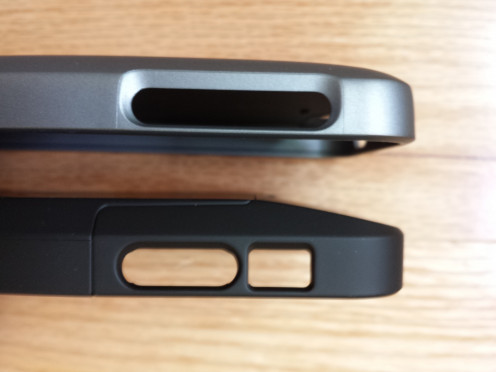
The LifeCHARGE case is on the bottom while the Mophie Juice Pack Helium is on top. Slight variation on the side opening. Points definitely go to Mophie for this one. The LifeCHARGE battery case grooves outwards around the buttons. This does not affect the volume rocker controls, but it does affect the side flick switch. The side flick switch became much harder to navigate when placed into the LifeCHARGE case. Mophie does a much better job. Without the grooved wrap around, the volume rocker and the flick switch protrudes out allowing for easier access. On the downside, it doesn't offer as much protection especially if you drop your phone on its side. Then again, the chances are slim as the corners will most likely come in contact in the event of a drop.
The Port View
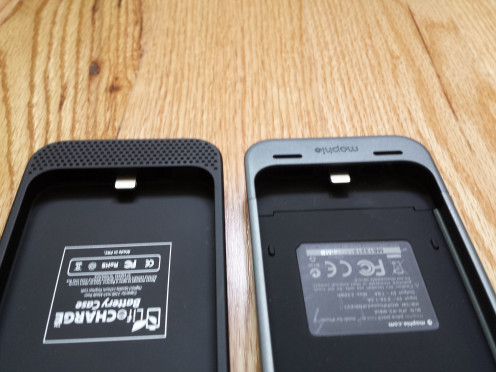
Both cases must employ and have employed the new Apple lightning port. There's nothing much to be said about that. Instead, we shift focus to the earphone jack. Mophie's earphone jack opening is slightly smaller than LifeCHARGE's. Also, it is rounded off as compared to the more rectangularly shaped found on the LifeCHARGE. For straight jacks, this is not a problem. However, those with a slightly bigger jack or L-shaped jack will experience great difficulty with Mophie's earphone jack opening. I dare say it may not fit entirely. If you have a pair of expensive earphones, make sure they will fit with the case you tend to buy. A simpler solution would be just buy a new pair of earphones.
The Snap-Off Design
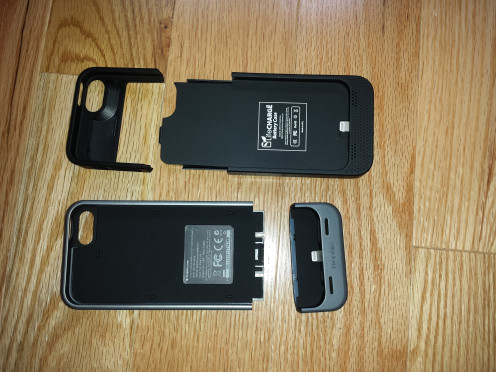
Slight variation with the snap-off design here. It is absolutely necessary to be able to snap the case or, in this case (no pun intended), part of the case off. Why? How else will one be able to insert their iPhone? I noticed a possible efficiency issue with the snap-off design. LifeCHARGE managed to keep the battery and lightning charger port intact. The snap-off is does not separate the battery from the rest of the charging component. The same cannot be said with Mophie. Mophie's design actually separates the battery (upper half) from the charging component (lower half). Rather than having direct wires connecting the two components together, the Mophie Juice Pack Helium relies on contact pins. To me, this is inefficient and redundant. The next picture illustrates this slightly better.
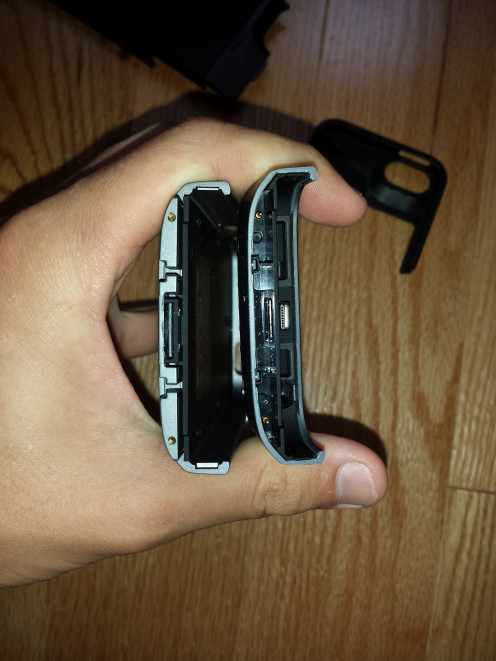
The two metal prongs come in contact with the battery base to create a circuit. I speculate that the connection will fail quickly over time due to everyday wear and tear. The connection surface will become dull from the metal to metal contact. It will also lose conductivity as it is exposed to external environment. I'm one of those people that constantly do case swaps. I've already experienced the stretched loose silicone shell with my Otterbox cases and I have no doubt that a similar occurrence will happen with this. Avoid taking the case apart as wear and tear may render it useless faster than the battery degrades. I have performed a charge test, but I suspect that this connection choice by Mophie may impact the results.
Charge Time Trial
Product
| Capacity
| Charge Time
|
|---|---|---|
Mophie Juice Pack Helium
| 1,500
| 55 Minutes
|
LifeCHARGE iPhone 5/5S
| 2,300
| 79 Minutes
|
How long it took to charge up each case.
Efficiency Test
Product
| Charge Time
| Percentage Charge
|
|---|---|---|
Mophie Juice Pack Helium
| 2 Hours 16 Minutes
| 81%
|
LifeCHARGE iPhone 5/5S
| 2 Hours 34 Minutes
| 100%
|
When it came to charging the iPhone 5S, the LifeCHARGE did take slightly longer. However, it managed to fully charge the iPhone while the Mophie only managed approximately 80%. Both charge tests were done when the iPhone's battery drained to the 15% level. Since we are working with an internal lithium-ion battery, it was not a good idea to fully drain the device prior to charging. The 15% critical level represents a good charge point and so both charge tests were benchmarked at this level.
Which Is The Better Buy?
The Mophie Juice Pack Helium is a tad overpriced for what its worth. It was incapable of completely charging the device to full yet it carries a hefty price tag. I could not get over its design choice to integrate both a battery status toggle button and a power toggle flick switch. Despite this, I do find the flick switch more manageable than the tiny power toggle button found on the LifeCHARGE. If you are willing to overlook this drawback, the LifeCHARGE carries a more affordable price tag allowing you to save a few bucks and truly double the battery life of your device. Keep in mind that the bigger battery capacity found in the LifeCHARGE battery case also contributes to a slightly heavier weight.


